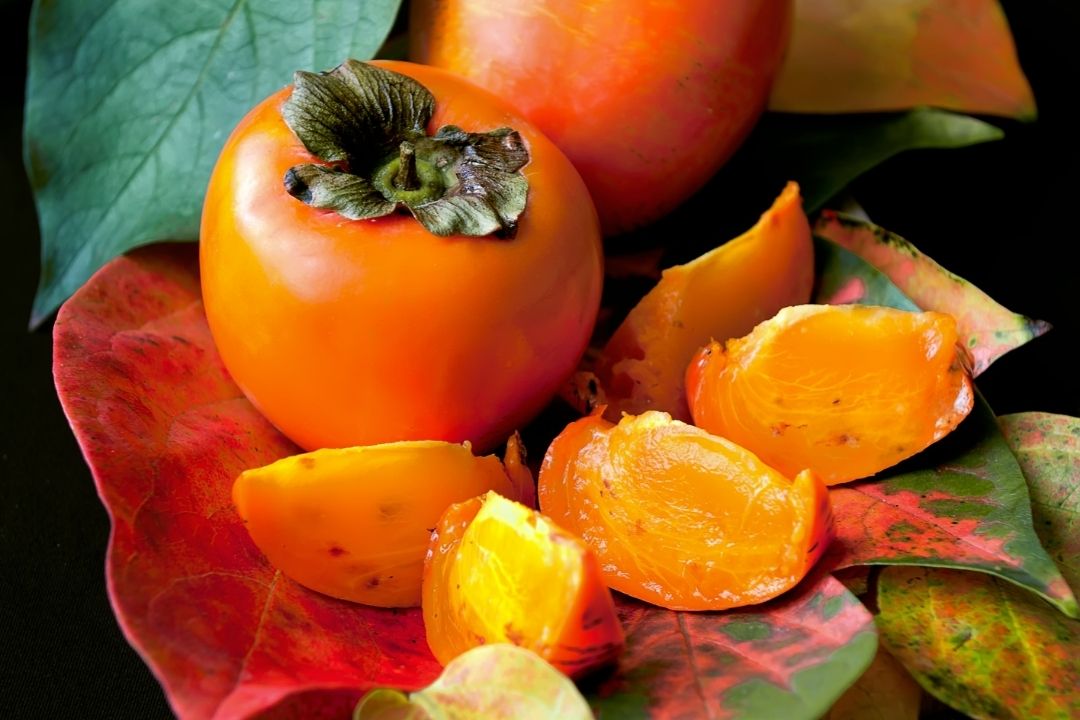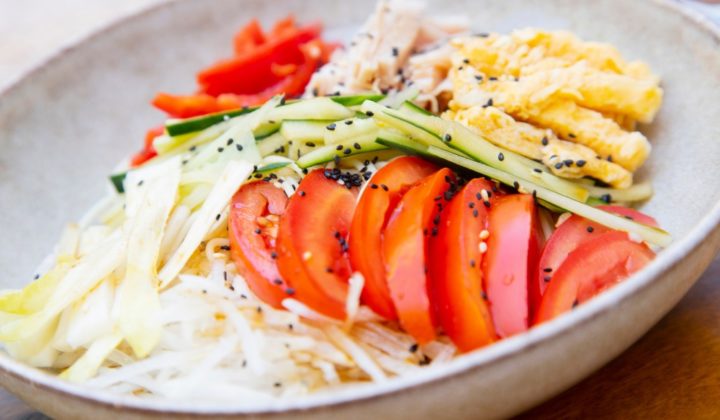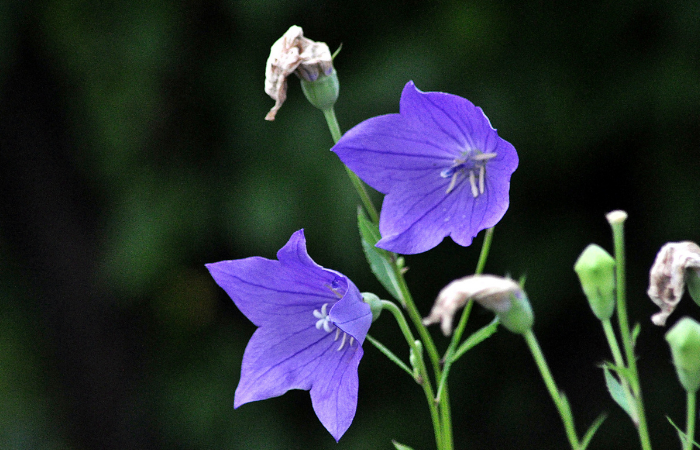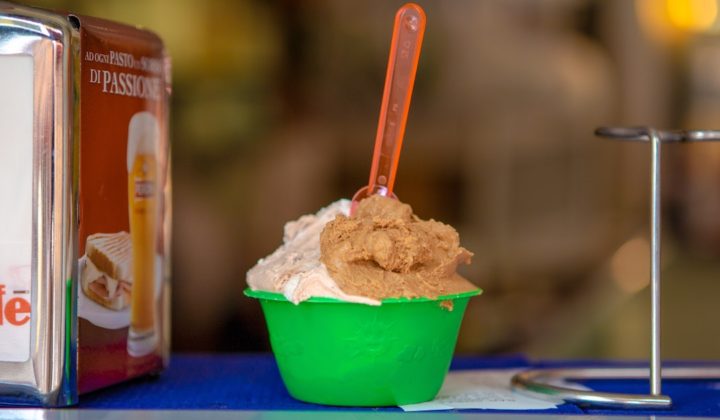Japanese Seasonal Fruits: When and Where to Try Them
Have you ever heard how expensive Japanese fruits are? Japan is famous for expensive yet high-quality and delicious fruits. Fruits in Japan are grown with great care and attention, which is why they are really juicy, tasty, and especially attractive to the eye. Japan has fruits all year round, with different special types of fruit available every season. Tasting some of the best and exclusive Japanese fruits is a must if you happen to visit Japan. Worried about the price? Not all places sell Japanese fruits at high prices. Check out this ultimate guide to get a hold of what fruit you should expect each season and the cheapest way to enjoy them all!
Strawberry (Ichigo)
Japanese strawberries have quite a reputation around the world. There are various types of strawberry in Japan, and I can assure you that all of them are sweet and tasty, and absolutely worth the price! Normally, the higher the price is, the bigger and tastier the strawberries are. Japanese strawberries have pretty colors and appealing appearance, good enough for a nice shot for your Instagram!

There is also a type of white strawberry that is grown exclusively in Japan called “Hatsukoi no Kaori”, which means “Scent of First Love”, and it’s quite popular in Japan. The strawberry season in Japan is during the winter and spring, from the beginning of winter in December to the end of spring in May. There are many strawberry gardens in Japan that offer all-you-can-eat picking deals, so you can try freshly picked strawberries as many as you like! Here are some strawberry gardens near Tokyo that you can try at a reasonable price:
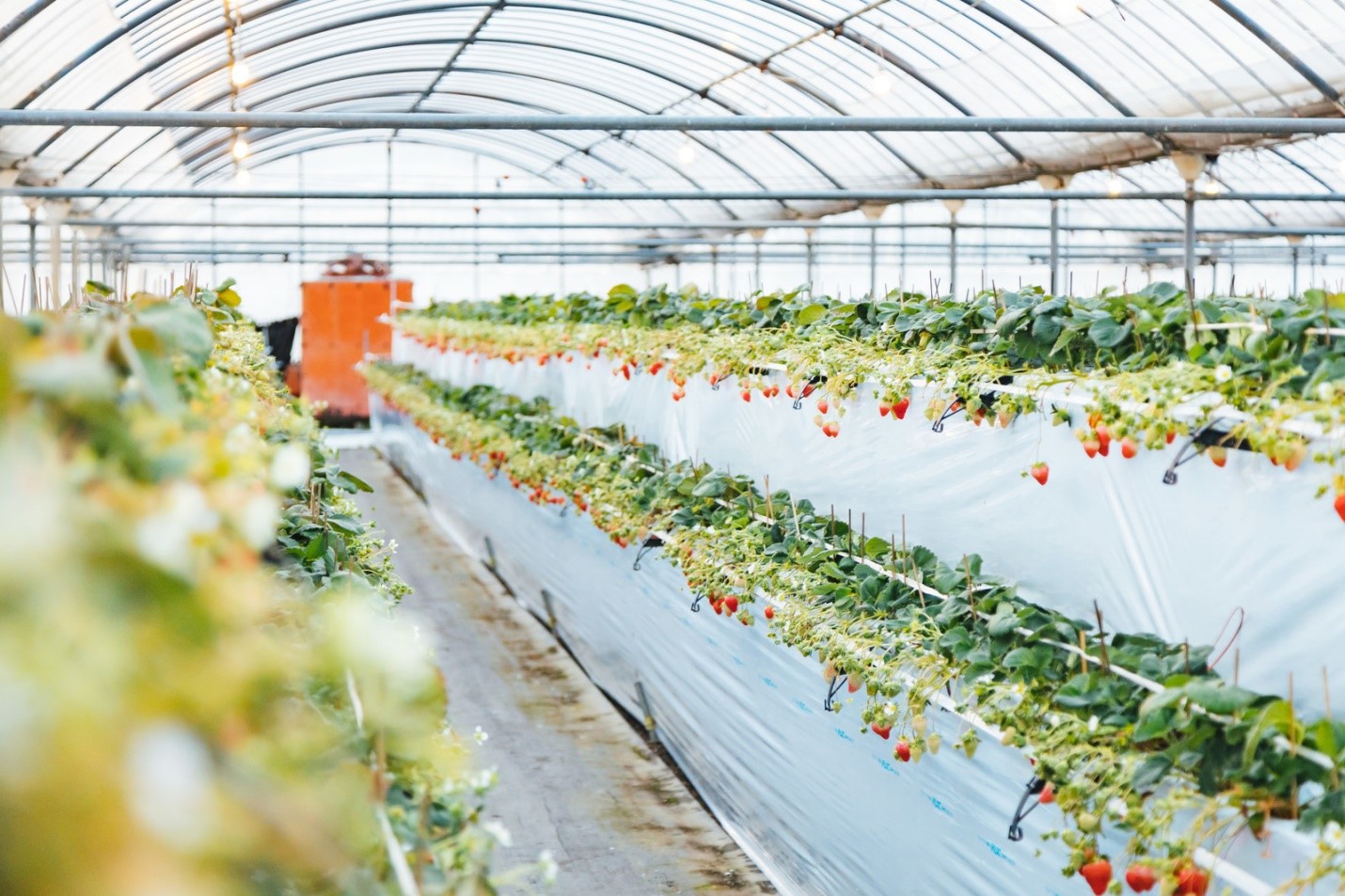
Berry’s Farm Hasegawa:
Address: 800-1 Wada, Gyoda, Saitama Prefecture 361-0061
Access: 30-minute walk from Chichibu Tetsudo Gyodashi Station
Cost: 1,700 yen (adults); 1,000 yen (children)
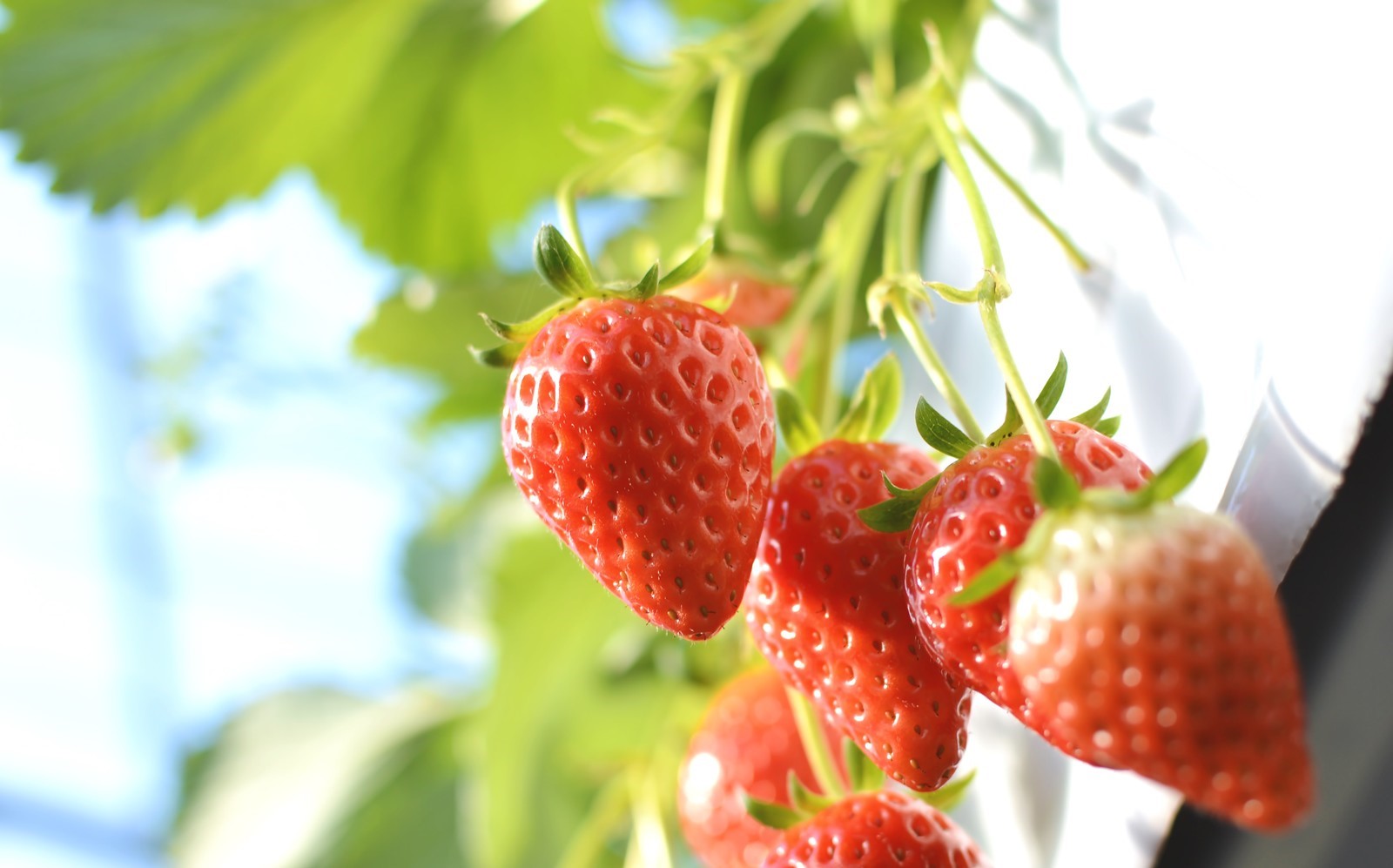
Strawberry House:
Address: 1120 Nakagouchi, Ebina, Kanagawa 243-0416
Access: 15-minute drive from Ebina Station
Cost: 1,800 yen (adults); 1,400 (children)
Niikura Noen Farm:
Address: 1170 Ochikawa, Tama-shi, Tokyo
Access: 10-minute drive from Seiseki Sakuragaoka Station
Cost: 300 yen per 100g
Note that the business time could be changed due to the Cororavirus pandemic!
Cherry (Sakuranbo)
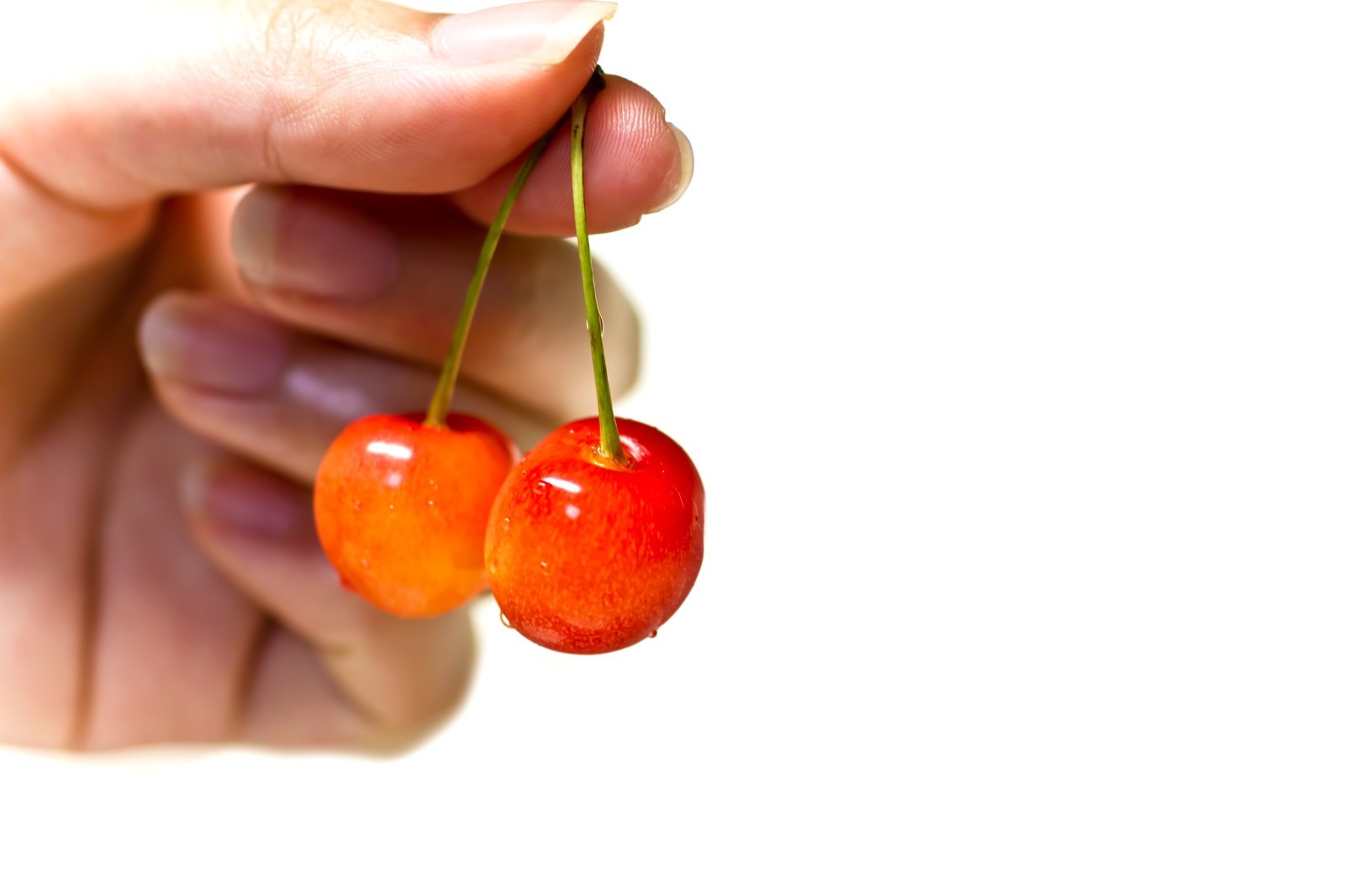
Most cherry blossom trees in Japan don’t bear edible fruits. Edible cherries are often grown in Tohoku, the northern part of Japan. Japanese cherries have bright red (though some are yellow), glossy, shiny skin and a subtle sweet and sour taste. The most famous type of cherry in Japan is Satoshiki cherry. Japanese cherries can’t be kept long, and the cherry season only lasts around 2 to 3 months in the first half of summer, from around May to July every year. Prices of cherries in supermarket and department stores can be pretty high, but are reasonable if you try them at all-you-can-eat cherry picking gardens. Check out some cherry spots below to visit during your next trip to Japan:
Roadside station Agri Park Ryuo:
Address: 6526 Yamanoue, Ryuo, Gamou District, Shiga 520-2531
Access: 20-minute drive from the Omihachiman Station
Cost: 1,800 yen (adults); 1,300 yen (children)
Horiuchi Garden:
Address: 1866 Horinouchi, Yamanashi, Yamanashi Prefecture
Access: 10-minute drive from the Yamanashishi Station
Cost: 2,000 yen (adults); 1,000 yen (children)
Note that the business time could be changed due to the Cororavirus pandemic!
Melon
Japanese melon is well-known for two things: its unbelievably expensive price and the high quality that comes with it. Foreigners are often astonished by twenty-thousand-dollar worth melons, wondering how they can get a price as high as that of a car. Well… Japanese people appreciate what is called “the art of growing melon”, and they are definitely proud of it. The process of growing these melons requires lots of care and special techniques, and the melons are treated like kings. So I guess that’s how they have that high of a price. Of course, not all melons in Japan cost that much, you can still find and enjoy good quality melons at a reasonable price in Japan, and there are also all-you-can-eat picking gardens for melons, too. The melon season lasts all summer from the beginning of May to the end of September, so pick a date and visit one of these melon spots before this summer ends!

Irago Seaside Farm:
Address: Aichi, Tahara, Wajicho, Shimoomichi 155
Access: 30-minute drive from Mikawa Tahara Station
Cost: 2,700 yen (adults)
Note that the business time could be changed due to the Cororavirus pandemic!
Watermelon (Suika)

Summer is definitely a time for watermelon! Japanese people enjoy having slices of cool, sweet and juicy watermelon during the unbearably hot summer days, at home or during their trip to the seaside. You may often see these watermelon scenes in Japanese mangas and animes, where the characters try to break a watermelon blind-folded. It’s quite an interesting activity so try it out during your trip to Japanese beaches for this summer!
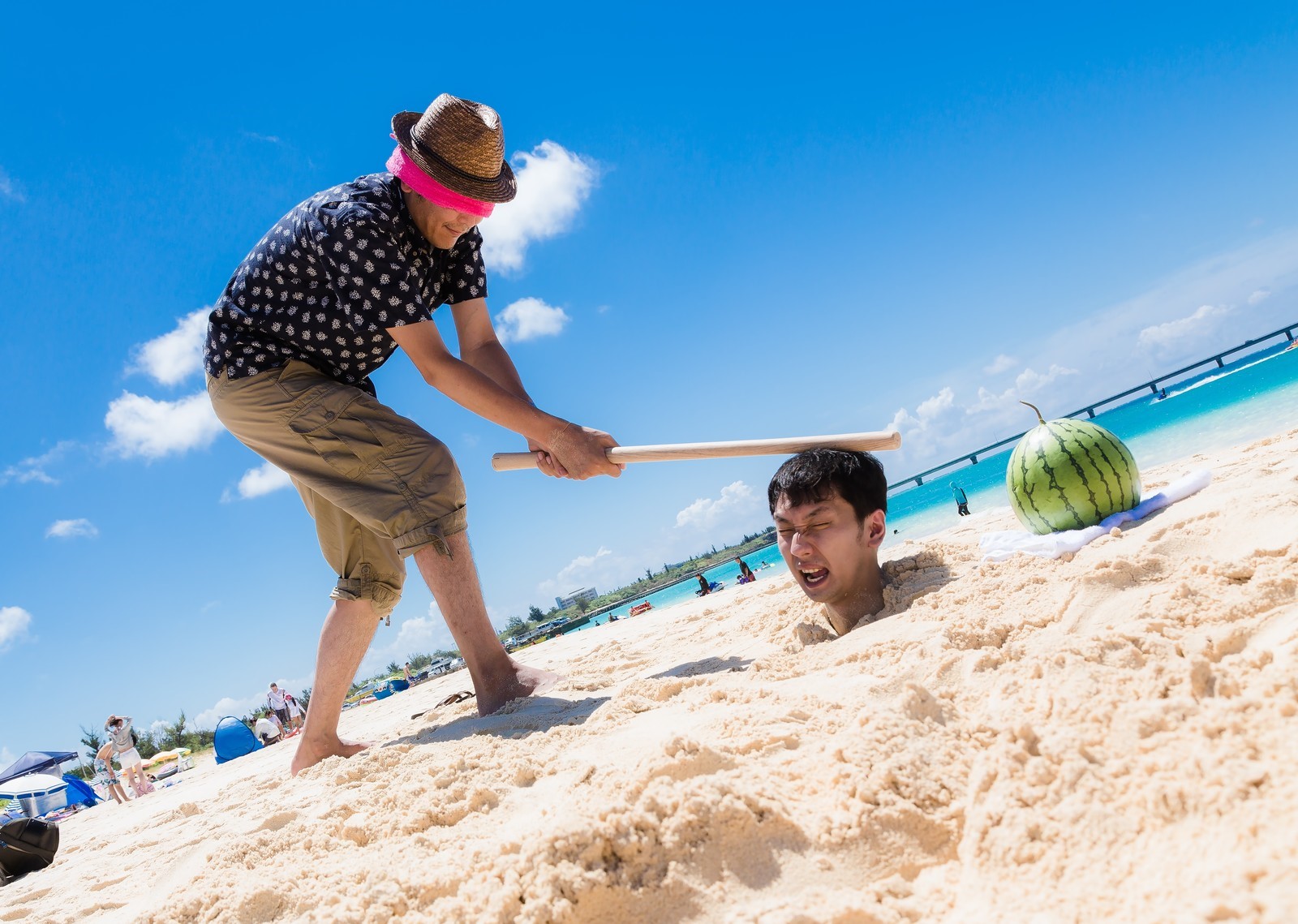
Watermelons in Japan come in various shapes and sizes, I mean literally, all shapes and sizes. Some are as small as a coconuts while some are as large as a beach ball (even bigger!). What’s more, round shapes are old-fashioned here, Japanese people have square and pyramid-shaped watermelons! Except for the weird shaped watermelons, most watermelons in Japan are not that expensive, and you can buy one big watermelon enough for 10 people at at price of approximately 2,000 to 3,000 yen. The watermelon season in Japan lasts from May to August every year. Watermelons are on shelves in most supermarkets and fruit markets during the summer, so it isn’t hard to find and buy one.
Peach (Momo)
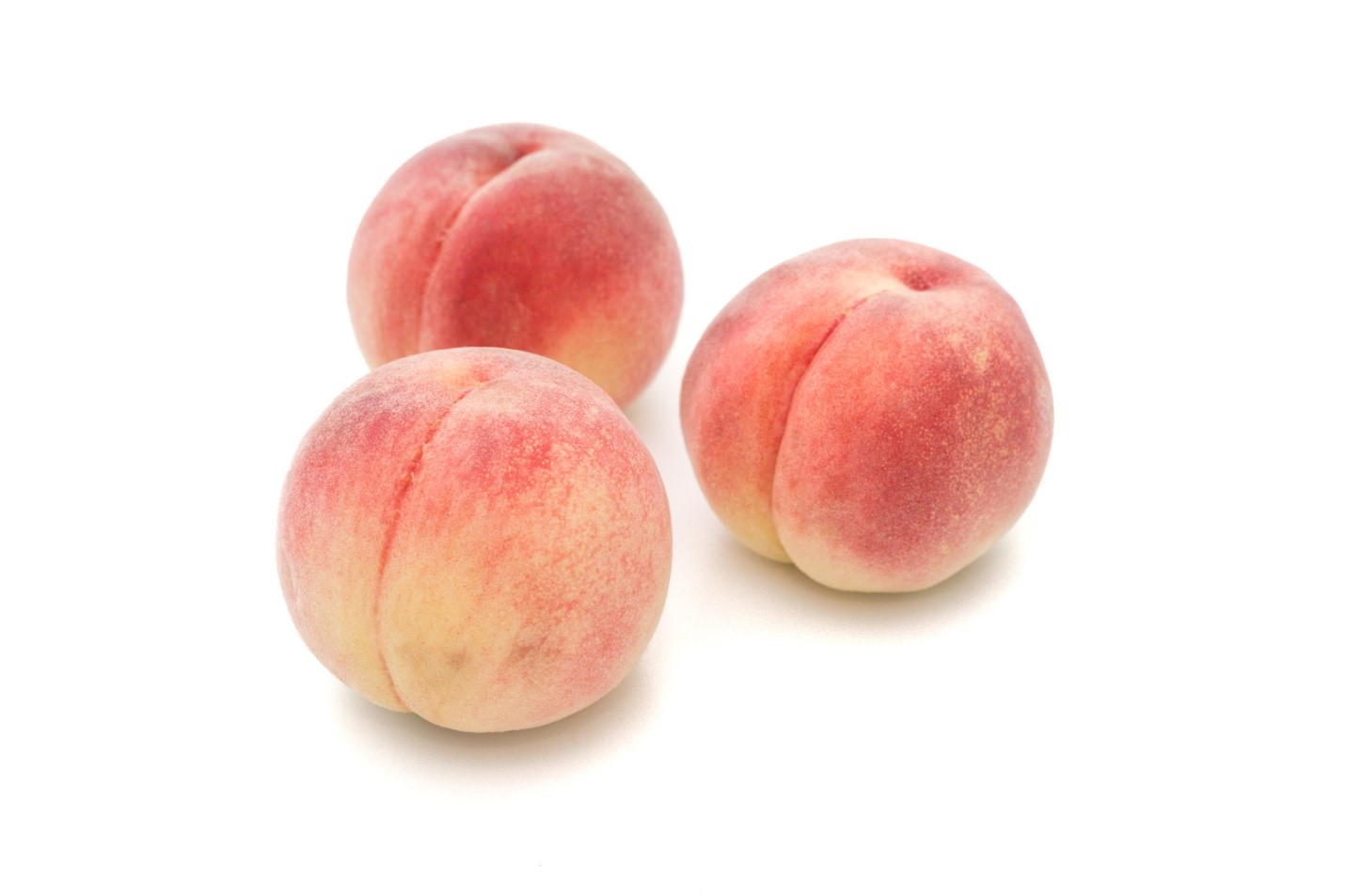
Japanese people are obsessed with peaches, which is no exaggeration. Even if it’s not during the peach season, you can still find peach-flavored food and beverages all around Japan, such as candies, cakes, juice, sparkling, or even the peach Coca Cola. There are also peach-fragrance shampoos or body mists. Many people love the pleasant, sweet smell of peach, and surely you’ll, too. Japanese peaches are sweet and juicy, once you have taken a bite, you won’t be able to resist taking another. Summer is the best time to taste peaches, especially from June to September. You can either buy them at supermarkets or visit peach gardens. I recommend the second option, though. The experience of picking peaches right from the tree and tasting the freshly picked peaches are the best. Besides, you can eat as many as you want, so you won’t have to worry about having to spend more on another peach anyway. Moreover, peach trees full of peaches are beautiful and worth a shot, dear Instagramers!
Horiuchi Garden:
Address: 1866 Horinouchi, Yamanashi, Yamanashi Prefecture
Access: 10-minute drive from the Yamanashishi Station
Cost: 1,200 yen (adults)
Ohara Kanko Orchard:
Address: Okayama, Niimi, Kusama-Ohara
Access: 15-minute drive from Ikura Station
Cost: 1,500 yen (adults), 800 yen (children)
Note that the business time could be changed due to the Cororavirus pandemic!
Apricot / Japanese Plum (Ume)
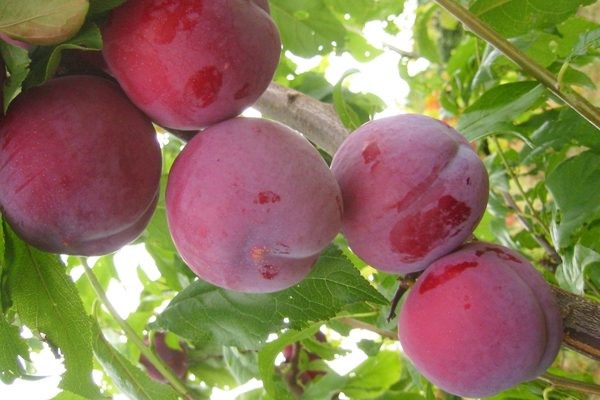
Japanese plums are the fruits of the plum blossom trees that flower during the beginning of every year in Japan. Japanese people use plums in daily life, from cooking to making wine. Raw plums are often used to add taste to dishes, pickled and eaten with cooked rice or porridge, or made into wine. The Japanese satsuma plum is large, with dark, solid red skin, and the inside is juicy, crunchy and sweet. The plum season is from June to September. The time plums begin to ripe is also the start of the rainy season in Japan, which is why Japanese people call rainy season Tsuyu, which is “plum rain” in Japanese. If you want to taste as many plum as you want, visit these plum gardens:
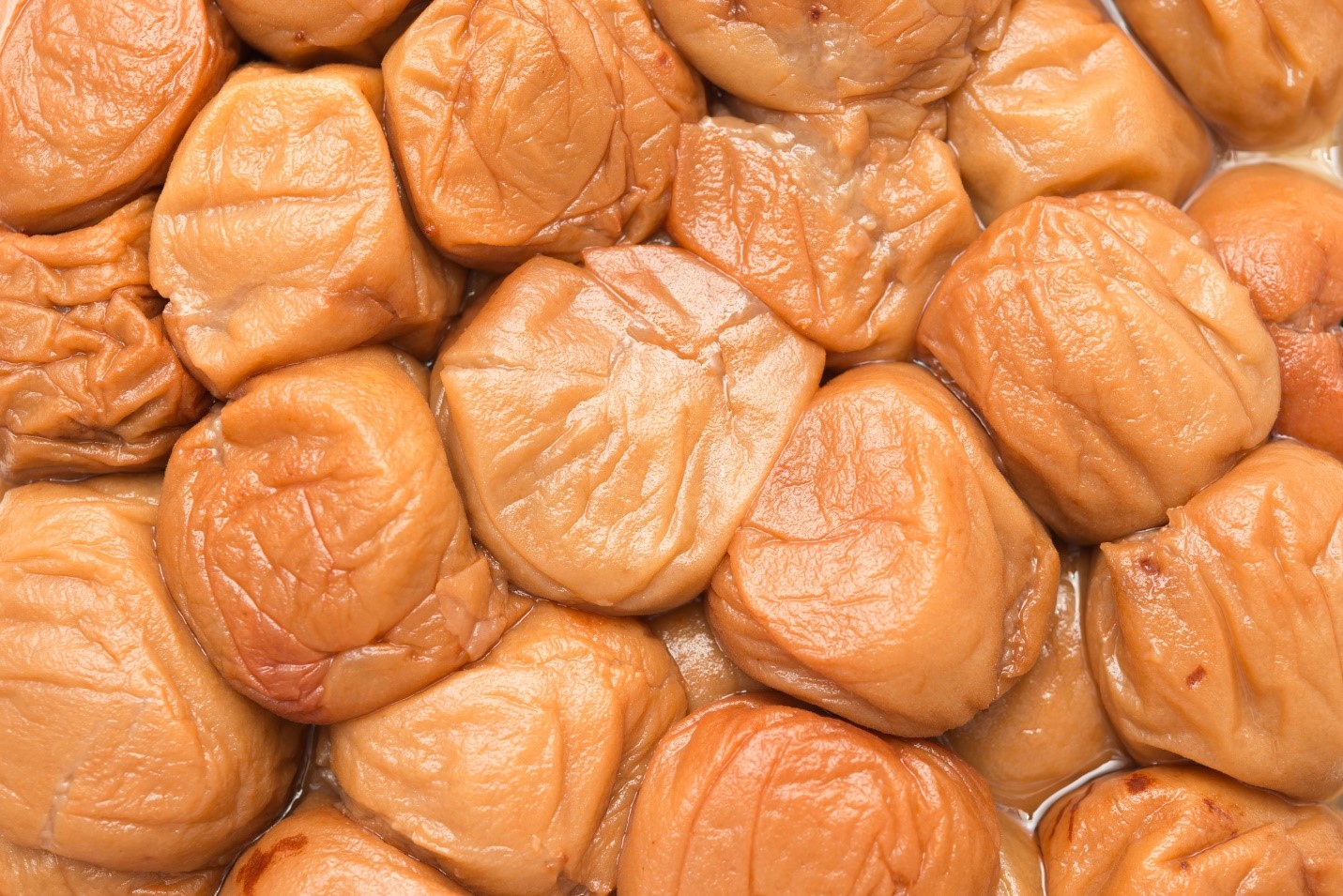
Saitama Norin Prefectural Park:
Address: Saitama, Fukaya, Honda 5768-1
Access: 9-minute drive from Takekawa Station
Cost: free entry, courses from 100 yen
Ashigakubo Fruit Park:
Address: Saitama, Yokoze, Ashigakubo 159 Yokoze Bukosan Information Centre
Access: 5-minute walk from Ashigakubo Station
Tsuiki Farm:
Address: Hokkaido, Nanae, Narukawa 4-297
Access: 5-minute drive from Nanae Station
Note that the business time could be changed due to the Cororavirus pandemic!
Grapes (Budo)

The grape season in Japan is from July to December, but the best time to eat them is in August and September when the grapes reach their peak of ripeness.
There are a variety of grape types in Japan, but the two types of Japanese grapes that are well-known around the world are Kyoho grapes and Shine Muscat grapes. Kyoho grapes are large and heavy, with dark purple color that is almost black. Each grape is big and juicy, with balanced sweet-sour taste that is to most people’s liking. Shine Muscat grapes are green grapes, a little smaller than Kyoho, but are also sweet and juicy. These types of grapes are grown with great care and thus are expensive. Kyoho grapes are often bought as gifts. Kyoho and Shine Muscat are specialties of the Tohoku area, but you can find them anywhere in Japan during the grape season.

Oshokaju Orchards:
Address: Yamagata, Tendo, Kawarago 1303
Access: 15-minute drive from Tendo Station
Cost: 648 yen (adults); 540 yen (childrens)
Chichibu Fruit Farm:
Address: Saitama, Chichibu, Shimokagemori 877-1
Access: 5-minute drive from Chichibu Station
North Grape Farm:
Address: Kumamoto, Aso, Minamiaso, Yoshida 1005
Access: 1-hour drive from Kumamoto city
Note that the business time could be changed due to the Cororavirus pandemic!
Pear (Nashi) and Apple (Ringo)
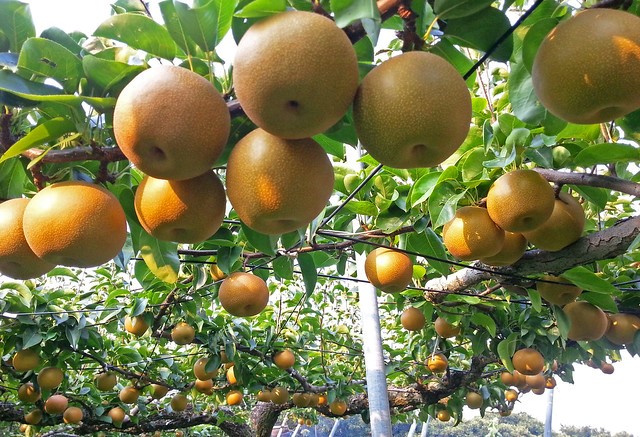
Japanese pears are very different from Western pears, bigger and with spherical shape instead of normal pear shape. Japanese Fuji apples are also famous around the world, and they are large and red. These Japanese fruits are more watery and crispier than normal pears and apples, and they’re really sweet. These fruits are perfect to make fruit desserts and pies, and you can come across some amazing desserts during the season. Apple trees bear fruits almost all year round, while pear season only lasts from August to October. Pears and apples may come at very high prices in supermarkets or department stores in Japan, but you can still enjoy them at reasonable prices in fruit farms and orchards. Check out some below and see if there’s one near you:
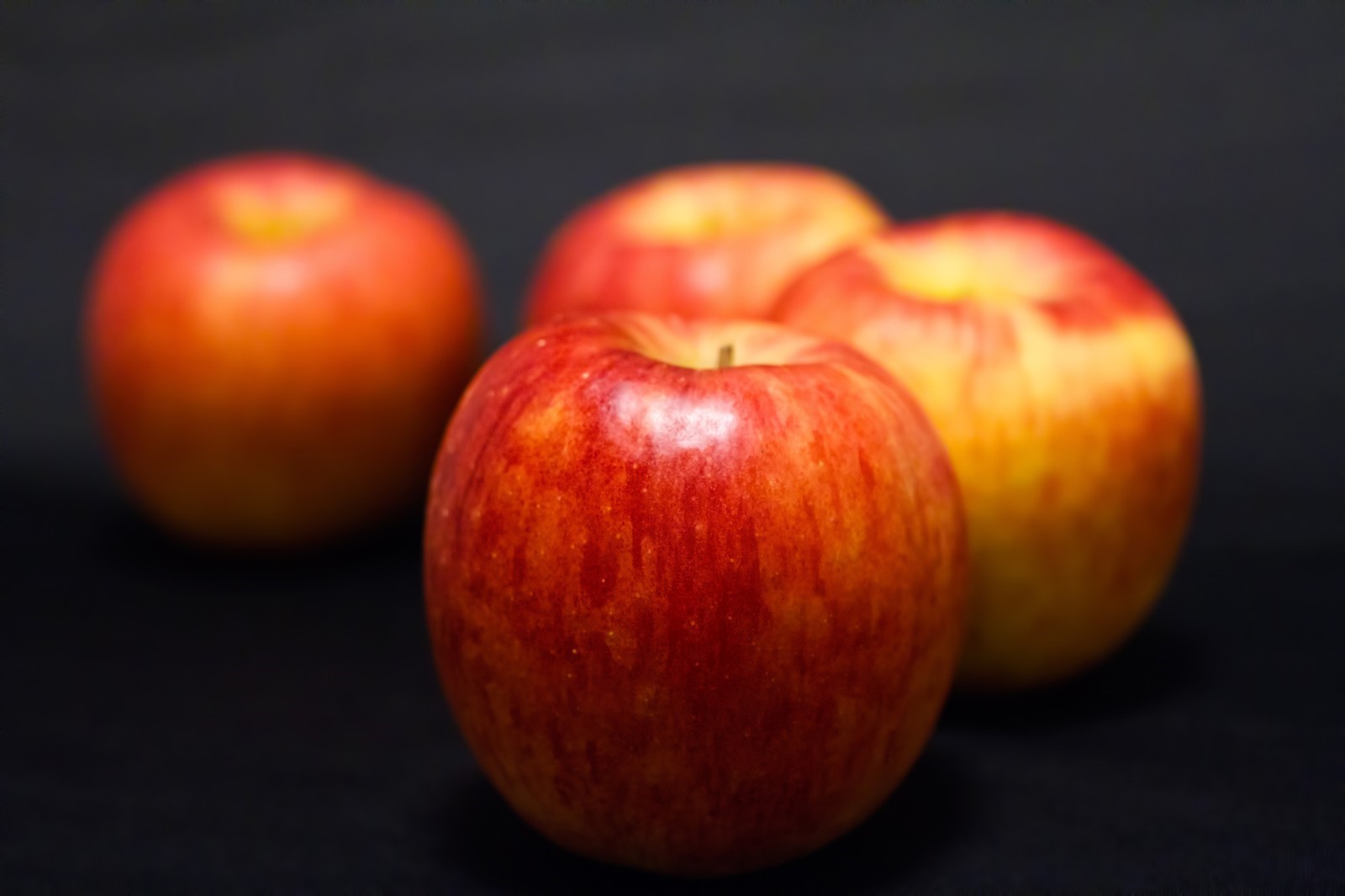
Ohara Kanko Orchard:
Address: Okayama, Niimi, Kusama-Ohara
Access: 15-minute drive from Ikura Station
Cost: 800 yen (adults), 500 yen (children)
Sunshine Fruit Farm Tsuchida:
Address: Sunshine Fruit Farm Tsuchida
Access: 30-minute drive from Sapporo Station
Note that the business time could be changed due to the Cororavirus pandemic!
Persimmon (Kaki)
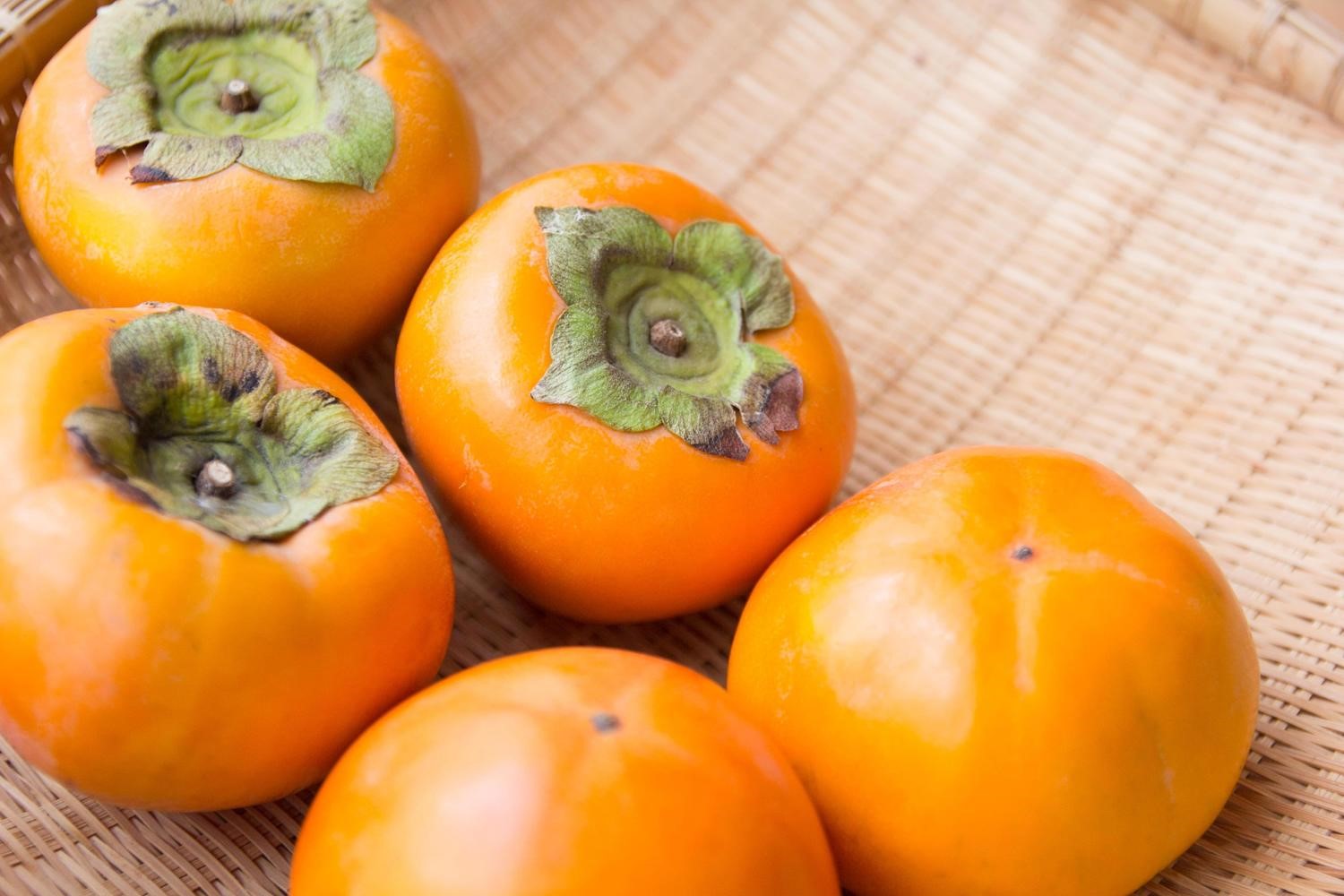
Persimmon is one of the most loved autumn fruits in Japan. The reason is because this fruit is extremely nutritious, rich in vitamin C, vitamin A, and dietary fiber. Japanese persimmon is crunchy yet juicy, and they are exceptionally sweet. Japanese farmer often hang them in the sun to make hoshigaki, or dried persimmon, to preserve them. Persimmon season is from the beginning of autumn, in September, to the end of the year. Persimmon can be found anywhere in Japan during persimmon season, but you can also visit persimmon garden for an all-you-can-eat course.
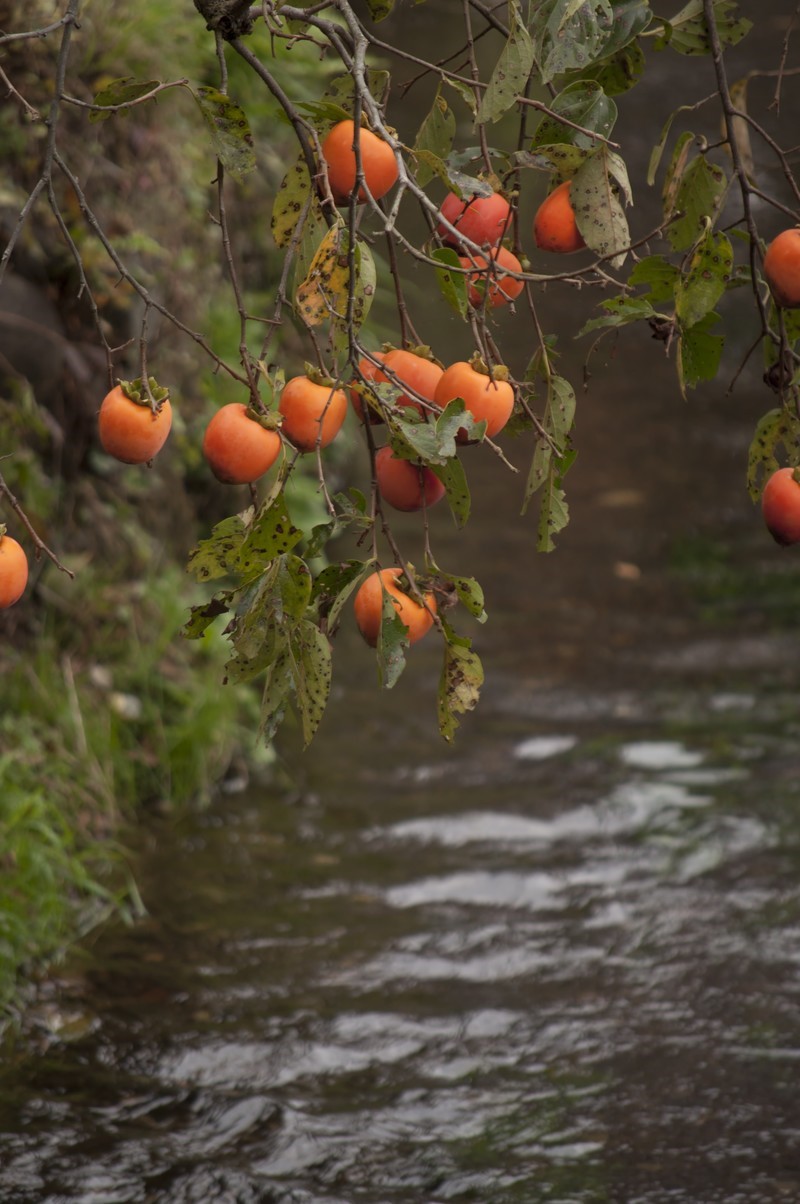
Matsuba Farm:
Address: Shizuoka, Shimoda, Ogamo
Access: 10-minute drive from Izukyu Shimoda Station
Cost: 500 yen (adults); 300 yen (children)
Ishimaki Tourist Farm:
Address: 441-1102 Aichi, Toyohashi, Ishimaki Nishikawacho Mukaiyama 5
Access: 10-minute drive from Nagayama Station
Migita Orchard:
Address: Fukuoka, Kurume city, Tanushimaru-cho, Chitoku 3024
Access: 15-minute drive from Tanushimaru Station
Cost: 800 yen/kg
Note that the business time could be changed due to the Cororavirus pandemic!
Mikan
Mikan is Japanese mandarin orange. They are seedless and can be peeled easily, and they are sweet with a faint taste of sourness. Mandarin orange season is in winter. Farmers often harvest mikan from October to the end of winter in February of the next year. Japanese people often eat mikan as snack or dessert while sitting under the kotatsu, and you may have seen those scenes in mangas or animes.
Usami Farm:
Address: Shizuoka, Ito, Usami 3506-2
Access: 25-minute walk from Usami Station
Cost: 400 yen
Yunoko Villa Espanola Fukuda Farm:
Address: Kumamoto, Minamata, Chinnai 2525
Access: 15-minute drive from Tsunaki Interchange.
Note that the business time could be changed due to the Cororavirus pandemic!
Yuzu
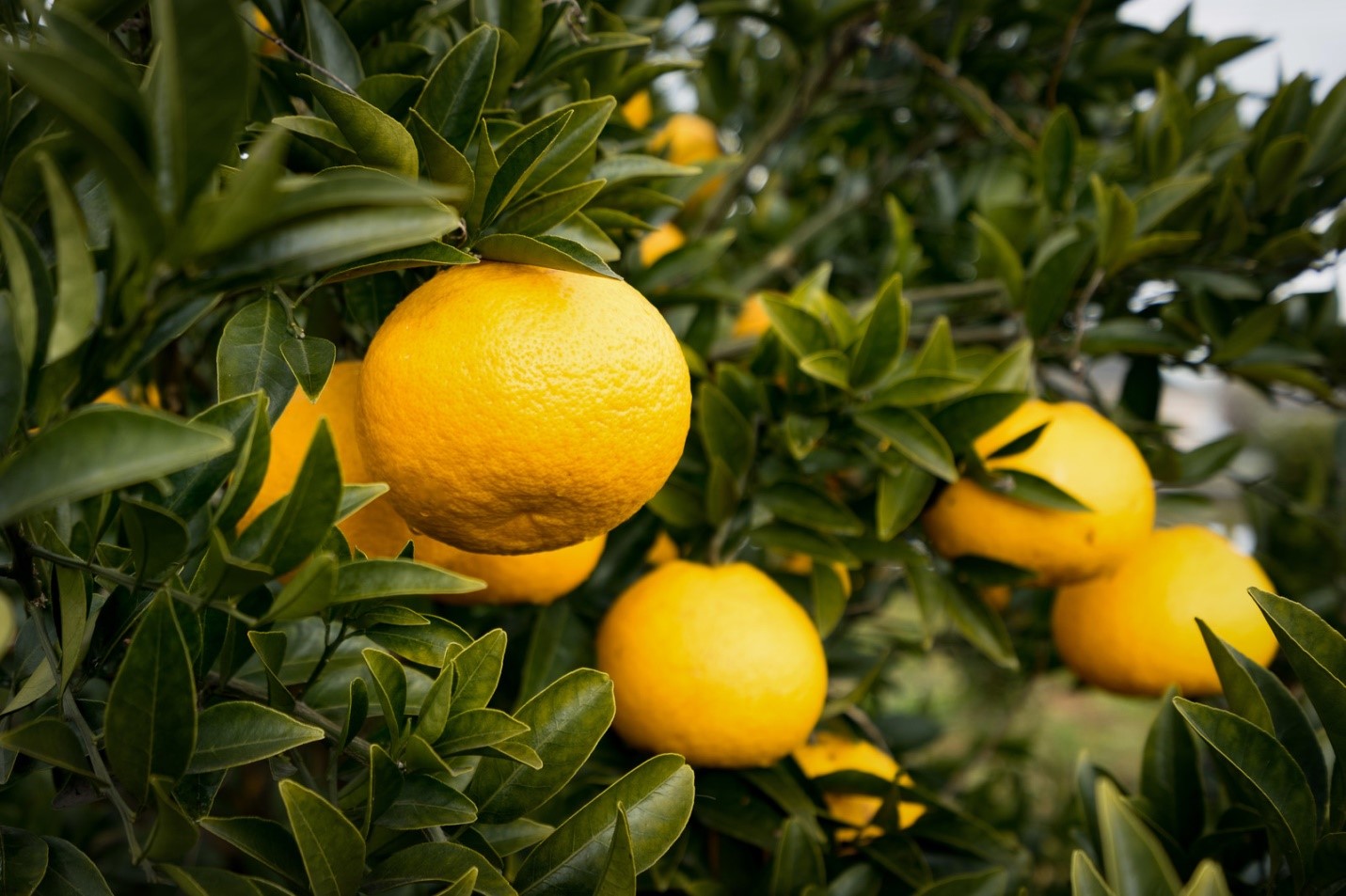
Yuzu is a type of citrus fruit that look a little bit like lemon, well, just the color. However, they are told to have a unique Japanese fragrance. Yuzu juice is often used for seasoning or making drinks. They are often added in the hot tub for a nice and relaxing bath, too, because of its aroma and health benefits. Yuzu bear fruits from June to December, but they are ripe in November and December. Both green and ripe yuzus have their own use and benefits.
Let’s see how many Japanese fruits you can find on your next trip to Japan!
Mai

